White-tailed deer are common in the Hudson Valley and they often browse in gardens. Fencing off flower beds looks ugly and is expensive, deer repellents require constant re-application and are costly. So I decided to garden with plants deer don’t like to eat, hoping the deer would dine elsewhere.
I thought I’d share with you some of my favorite perennial plants that deer usually avoid eating. They are hardy in USDA climate zone 5.
For Spring
Lamium – A pretty ground cover for shade/part shade. The decorative leaves have silver, white or yellow patches. Flowers are small and pink or white. I really like the raspberry pink flowers on is this one, Lamium maculatum Chequers. Lamiums grow about 6″ tall.
Dianthus – These plants are drought tolerant and great for xeriscape gardens. The silvery foliage forms neat, dense clumps. There are many varieties and flowers can be white, pink or red. Some have a gorgeous ‘clove’ fragrance. This award-winning variety is ‘Firewitch’, it has magenta colored flowers.
Creeping Phlox – An excellent ground cover with tiny pointed evergreen leaves and pink, purple or candy-striped flowers. Grows about 6″ tall and tolerates poor, dry soil. Bloom time is April – May.
For Summer
Bearded Iris – This plant has attractive vertical spike-shaped leaves and large blooms. Thrives in full sun and well-drained soil. There are different sizes; tall, standard, dwarf and miniature. So many choices of flower color!
Coreopsis – Grows well in full sun but will tolerate partial shade. A native prairie and woodland plant. There are many different flower colors and forms., this one is called ‘Moonbeam’ it is an award-winning variety and I can see why, with pretty foliage and masses of yellow flowers. Bees love it! Easy to grow and trouble-free.
Monarda – The leaves are fragrant and flowers come in shades of red, pink or purple. Recently, smaller varieties have been introduced and they can be grown in pots. Attractive to hummingbirds.
Gaillardia – A native prairie plant, it thrives in full sun, flowers can be red, orange or yellow. This one is ‘Gaillardia Globin’ it’s about 12″ tall, a neat mound of foliage and smothered in flowers. Great for the front of the border.
For Fall
Stachys – Grown as a foliage plant, the beautiful silvery leaves are covered in soft hair. Does well in full sun. This one is called ‘Fuzzy Wuzzy’, it grows about 15″ tall, the flower spikes are about 20″. Great for hot dry xeriscape areas. In the spring, the tiny purple flowers attract bumble bees.
Aster – Flower colors are white, pink and purple. Attractive to butterflies. Sun to part shade. I grow this small aster called ‘Pink Dome’, it grows to 12″. Really lovely flowers!
Rudbeckia – Unfortunately deer do very occasionally eat the flower buds, but the plants will produce more flowers later in the season. The seed heads are a source of food for goldfinches and other seed eating birds. This one is an award-winning garden classic, ‘Rudbeckia Goldsturm’. It grows to about 2′ tall and is covered in bright yellow flowers in late summer/early fall.
I’m all about ‘low maintenance gardening’ and love these deer resistant perennials because they save me work, time and money. I don’t have to add fencing or apply chemical deer deterrents. At first I felt frustrated by the restricted selection but not any more. After a few seasons, it’s obvious that deer find these beautiful flowers inedible and the buffet is closed. (I do still miss roses though!).
If you’ve had success with a plant that’s not included here, add a comment and share your knowledge with the Hudson Valley gardening community!

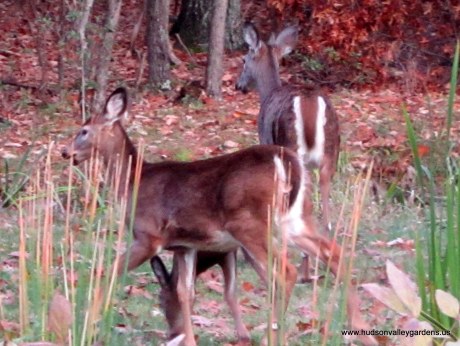
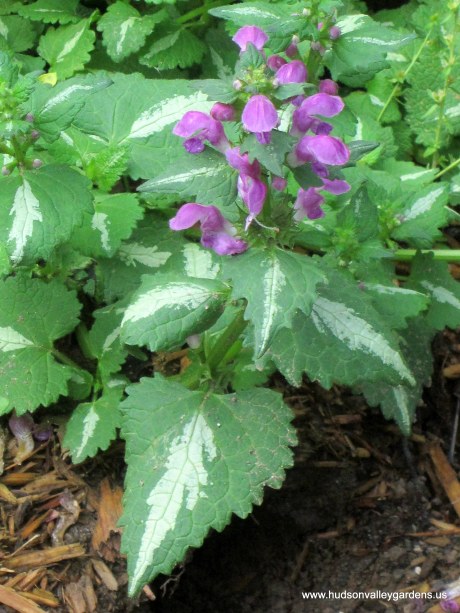
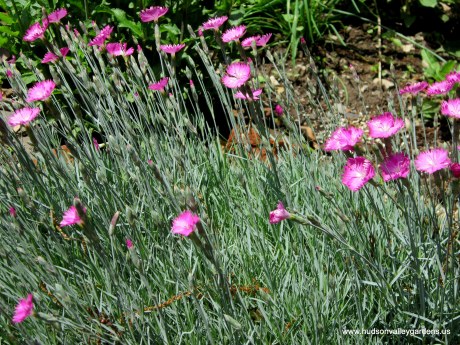
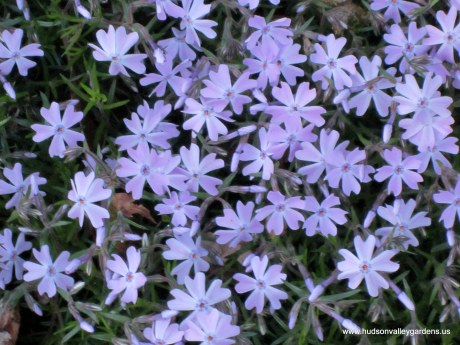
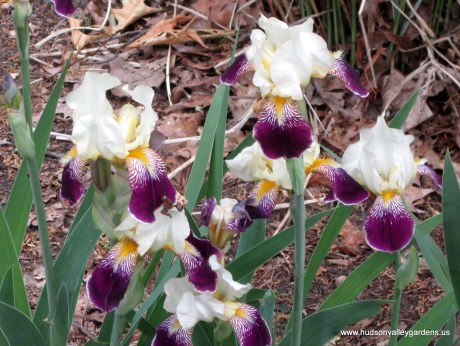


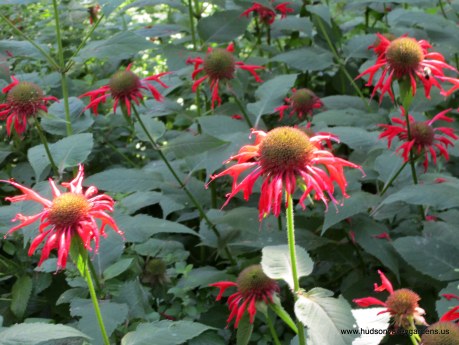
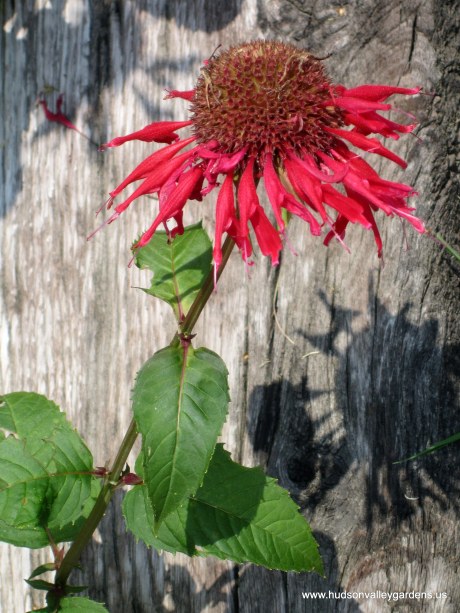
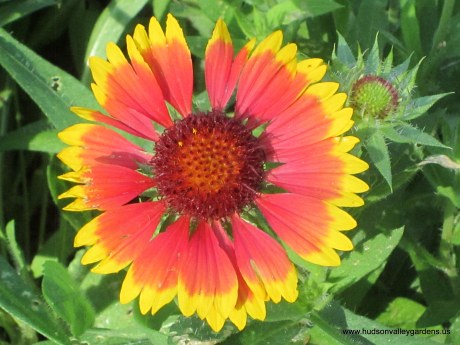
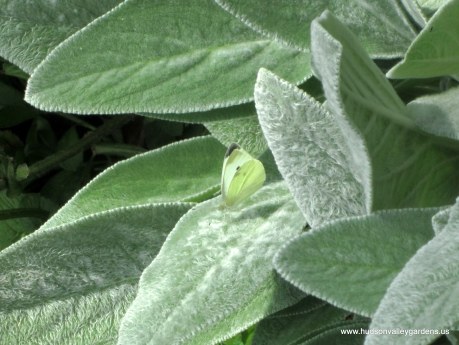

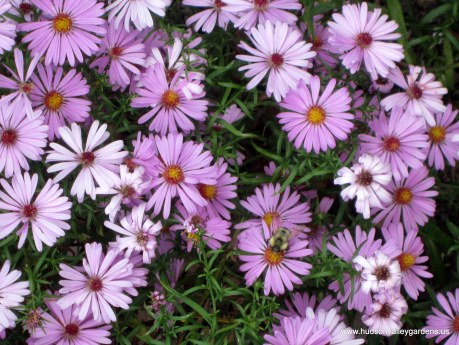


Great post, and I would add Alliums as another deer-proof plant for spring and summer.
Yes I agree, Aliums are a great choice too. Thanks!
Everything on your list works for us except the Phlox. I planted some in our first spring and they were eaten immediately . This is a great list of reliable and beautiful plants ☺
Eaten by deer? That’s interesting. Maybe your deer in Virginia have different tastes. Or maybe the phlox you planted (your part of Virginia is zone 7) is a variety that’s not used here in NY.
I would guess that to be the case. It was our first spring here. It looked like deer damage, but may have been rabbits, too. I’ve not tried planting Phlox since….. We still have a healthy community of rabbits here, although our deer visits are ever rarer. Now the squirrels are eating potted plants! Not only Coleus, but I found shredded begonia branches this morning, too. It is hard to know what may be safely planted, and were, sometimes!
I agree! You never know. It varies from year to year too. I have chipmunks that will dig up potted plants & eat the bulbs so I add a thick layer of gravel on top of the soil in the pot to deter them. I’ve noticed a large woodchuck in my neighbors garden, wonder if they’ll migrate to mine….
We love chipmunks, and have to travel to see them. Didn’t know they did in pots like squirrels…. We also add a layer of gravel in pots to deter the squirrels, which sometimes works; sometimes doesn’t. I also add a clove or two of garlic to some potted plants. It gives additional protection from grazing deer at least and sometimes deters the squirrels. Each year is different 😉
That’s a great idea about adding the garlic, I never thought of that. Yes we have a lot of chipmunks, they are a type of ground squirrel apparently. They get quite used to us & sometimes sit still and watch us. Very cute animals.
Precious little animals- in a forest. In your garden and pots I’m sure they are a problem. yes, garlic cloves help, and so do garlic chives. I often plant chives around plants to protect them or put a small division in a pot. Let me know whether it works for you if you try it, please- Hope you’ve had a good weekend-
WG